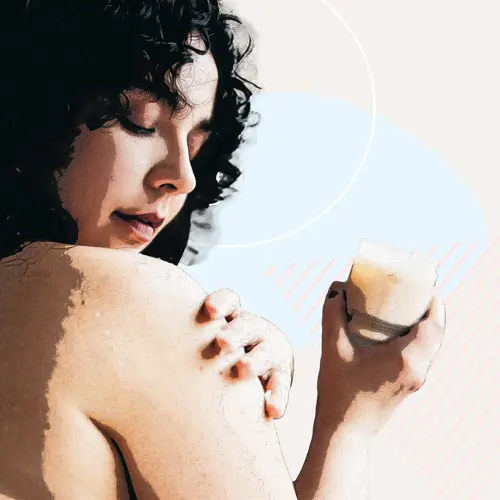When our bodies grow, our skin stretches to accommodate the growth. If skin is stretched too much, it can form scars known as stretch marks.
Stretch marks usually aren’t painful. They don't usually have an effect on physical health. But they can be upsetting to people who get them.
Most people will develop some form of stretch marks during their lifetime. Several factors help to determine where you might get them and how bad they’ll be. There are some treatments that can reduce their appearance on your skin.
What Are Stretch Marks?
Stretch marks look like long scars on the skin. They’re lesions (damaged areas) on your skin caused by too much stretching.
Your skin contains fibers called collagen and elastin. They give your skin elasticity and firmness. When your body grows quickly, your skin sometimes can’t accommodate that growth without the fibers tearing, which leaves stretch marks.
When they first appear, stretch marks are known as striae rubrae. Striae rubrae are often red, purple, or blue, and they’re known as active stretch marks. When the scarring heals, stretch marks turn white, and are called striae alba.
You can get stretch marks on most parts of your body, but they most often show up on your:
- Biceps and upper arms (for men)
- Thighs
- Abdomen
- Breasts (for women)
- Lower back and buttocks
Because stretch marks are a result of your skin stretching rapidly, most people get them during a stage of life when their body is growing. These people are most at risk for stretch marks:
- Bodybuilders
- Pregnant women
- Teenagers going through growth spurts
- People who’ve gained weight quickly
- People who’ve had augmentation surgery, such as breast enhancement
- People who use topical steroids (those that you apply to your skin)
- People with Cushing’s disease
Although stretch marks affect both women and men, women are more likely to get them. Other things that determine whether you get stretch marks are genetics, age, and race. Your skin elasticity and hormone levels also play a role in whether you get stretch marks and how bad they are.
Why Stretch Marks Appear on Biceps
Bodybuilders and men who weight train usually develop their biceps and arm muscles during exercise programs.
Muscle-building workout programs can be very effective. But if you increase your muscle size too rapidly, your skin might not be able to accommodate it, and you could end up with stretch marks.
Stretch marks develop when you grow quickly. Pace yourself during your weight training program, and build your muscle size little by little. It might help prevent bicep stretch marks.
Are Stretch Marks on the Biceps Preventable?
There are lots of theories about the best way to prevent stretch marks.
Creams. Some people claim that applying different oils and creams can increase your skin’s elasticity to help it stretch. Some studies have found that applying a prescription retinoid cream like tretinoin or hyaluronic acid can help reduce the appearance of stretch marks.
Other substances like olive oil or bitter almond oil are popular, but don’t have an effect on stretch marks. They won’t cause any harm if you decide to use them anyway.
Diet. A nutritious diet can help to improve your skin’s overall health. Eating foods rich in antioxidants like leafy green vegetables, fatty fish, and fresh colorful produce can help promote healthy skin and protect it from damage. Avoid refined sugars and carbohydrates. They can contribute to skin aging.
How to Treat Stretch Marks on the Bicep
Any treatment for stretch marks works best when it’s done early. Striae rubrae are more receptive to treatment than when they heal into striae alba.
Other than skin creams, there are a few treatments that could change or reduce the appearance of stretch marks. They can be done alone or in combination with other treatments.
Microdermabrasion. This essentially removes the outer layer of skin. It gets rid of uneven, dull skin and can help improve the appearance of stretch marks.
Microneedling. Microneedling is done with a device that has very thin needles. It’s passed over your skin to help stimulate it to produce a protein called collagen.
Laser treatment. Laser treatment can fade new stretch marks and improve their appearance overall. It’s not as effective once they turn white. It can reduce the size of stretch marks and improve skin’s texture. It’s not usually recommended for people of color because the skin can change to a lighter color after treatment.
See a dermatologist to find the best option to treat your stretch marks.

